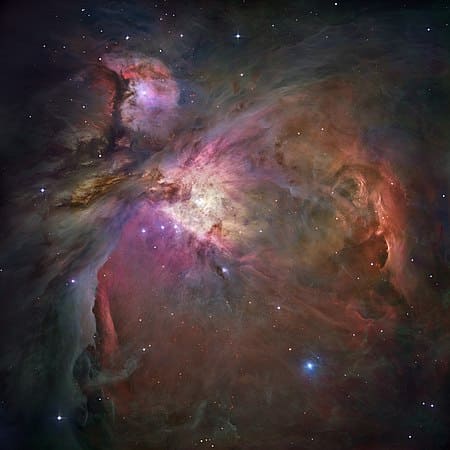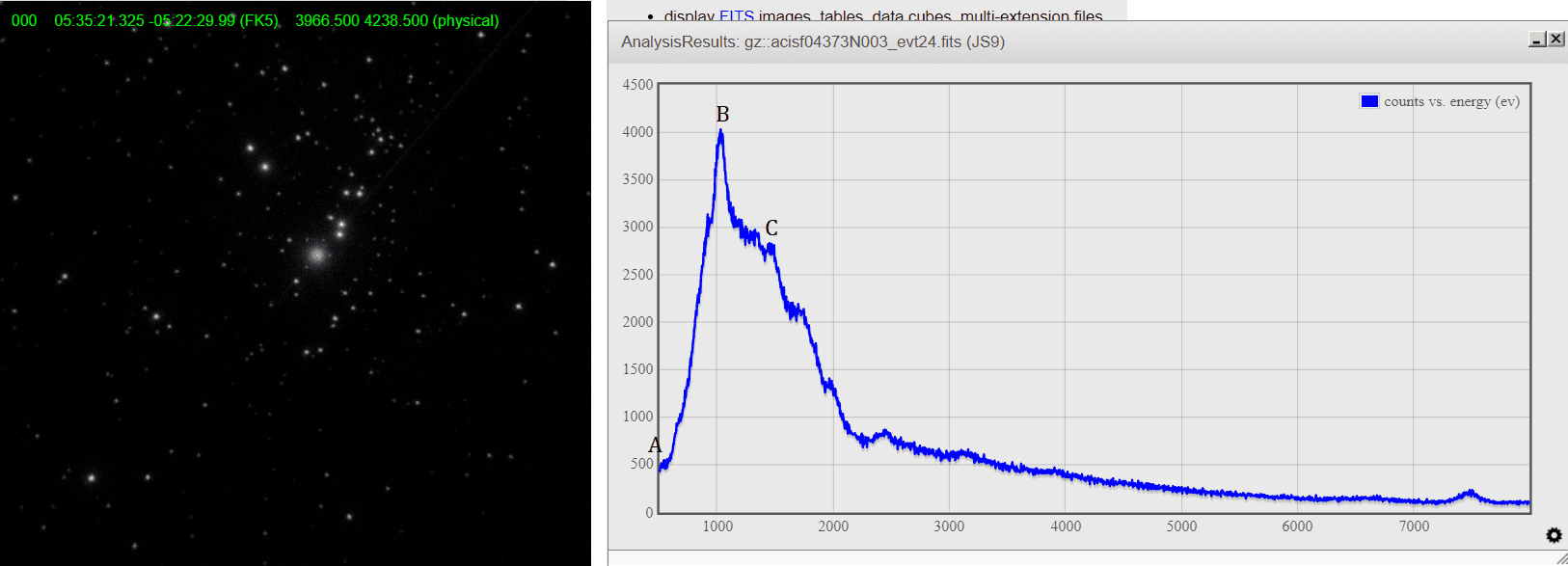Messier 42
The Messier 42, also known as the Orion Nebula or NGC 1976, is a diffuse nebula located south of Orion's belt.6 It is one of the brightest nebulae in existence, and it can be observed with the naked eye over the night sky. It is located 1270 ± 76 light years from Earth, 2 although its distance has now been measured at 1,350 light years, and has an approximate diameter of 24 light years.

The Orion Nebula is one of the most photographed, examined, and researched astronomical objects. Determining information about the formation of stars and planets from colliding clouds of dust and gas has been obtained from it. Astronomers have observed protoplanetary disks, brown dwarfs, strong turbulence in the motion of gas particles, and photoionizing effects near very massive stars near the nebula.
-
I have analyzed the spectrum of this nebula. In this graph I have looked at which were the highest peaks, to identify what element it is made of. Then I have calculated the area of each peak with respect to the total and these are my results.

To show that these are the correct elements I will attach some photos. To find what each element is, I have used the following web page: http://hyperphysics.phy-astr.gsu.edu/hbase/hyde.html#c4
-
CHROME NICKEL


I have searched scientific articles and according to Russell, R. et al, 1980 this nebula contains oxygen and carbon. Also, acording to Gordon, M. A., 1987, this nebula contains hydrogen.
I have since peak A contains these three elements since in this graph the peak is not very big and it does not look very nice. All three elements have a very low electron volt energy and for this reason, just in this case, I have put it together.
Licensed under the Creative Commons Attribution Share Alike License 4.0